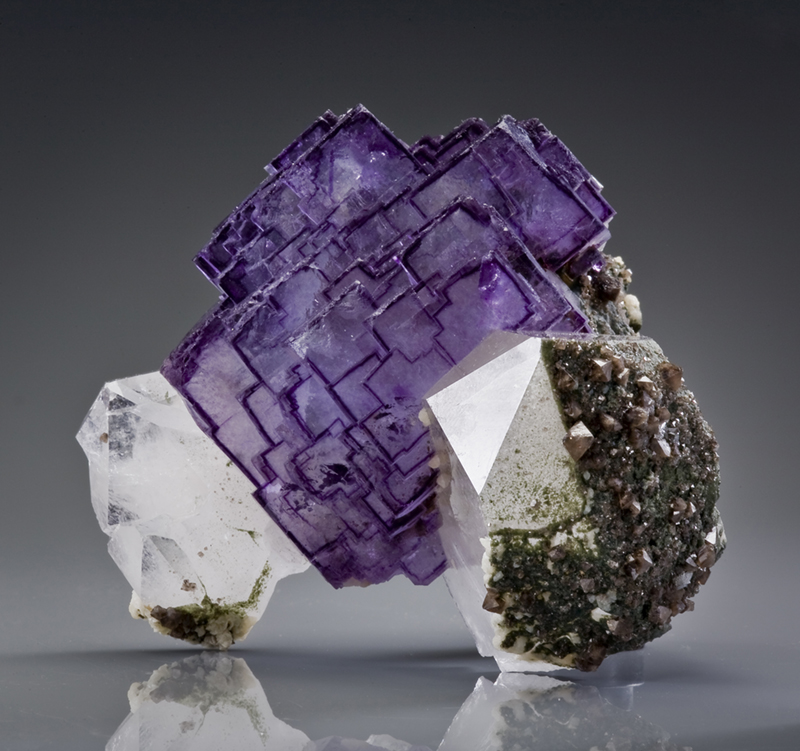Fluorite is a very popular mineral among collectors, as it forms very distinct cubic crystals that can be almost any color. Fluorite has the chemical composition CaF2 and belongs to the halide mineral family. Halide minerals have a halogen element (fluorine, chlorine, bromine or iodide) in their chemical formula. Table salt (NaCl) is another example of a halide mineral. The color of fluorite is determined by trace elements, so pure fluorite would be completely clear. Fluorite is a relatively soft mineral, with a hardness of 4 on the Mohs hardness scale. It has an isometric crystal system, which makes it highly symmetrical, and it is easily recognizable in hand samples because it has perfect cleavage in four directions. Cleavage is the ability of a mineral to break along a flat plane. Because of this property, some collectors will break cubes of fluorite along its cleavage to form octahedrons.
Fluorite was the first mineral discovered to exhibit fluorescence, the property of showing bright colors when exposed to ultraviolet light. It is also an economically important mineral, as it is the main ore of the element fluorine and is used as a flux in steel manufacturing. Clear fluorite has important optical properties. Fluorite is a relatively common mineral and can be found around the world. It is commonly formed in hydrothermal deposits and is often found as mineral veins in rocks.
To see examples of fluorite, come visit the Dice Mineralogical Museum on the first floor of North Hall, open 1:30 p.m. to 5 p.m. every Monday, Wednesday and Friday.








